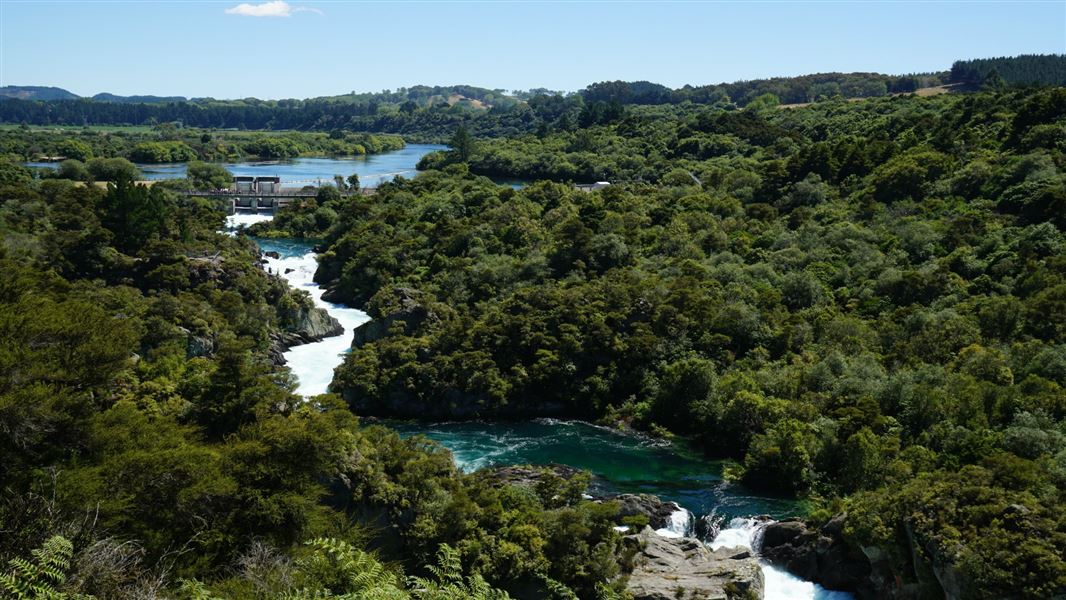620 m return via same track
Keep clear of the rapids at all times
Never enter the spillway or downstream areas.
The track leading to the two lookout points begins 50 metres from the bridge on the true right of the river. Before the water was diverted to the power station in 1964, the Aratiatia Rapids were the largest in Australasia - the Waikato River dropping 28 metres in just one kilometre. Today their full potential can still be seen during the scheduled daily releases. Each release lasts 15 minutes.
Opening times: 10 am; 12 noon; 2 pm (and also 4 pm 1 October - 31 March)
The tiers of the rapids and steep walls of the gorge are remnants of an ancient volcano. It is said the the name "Aratiatia" comes from the meaning "stairway of Tia". Tia was a leader from the waka Te Arawa, and passed through the gorge with a small party on route to discovering Lake Taupō.
These are also the famous rapids used in the filming of the barrel escape scene in Peter Jackson's movie, The Hobbit: The Desolation of Smaug.
The Aratiatia Dam and Rapids are located on Aratiatia Road, off SH5 10 km north of Taupō.
Stay safe at the Aratiatia Rapids

Stay out: Keep clear of the Aratiatia Rapids spillway and downstream area at all times. Never enter, swim or kayak in this area.
Pay attention: Stay alert for the signs, sirens and safety warnings.
Be aware: Spills may happen at any time, even when there is no siren.
Spill schedule
- Scheduled viewing of tourism spill: 10 am, 12 pm, 2 pm, (4 pm summer only)
- Controlled operational spill: Year round and anytime 24/7
- Uncontrolled water flow (without warning): Year round and anytime 24/7
- Major works are underway which will mean larger and more frequent dam spills
Tongariro National Park Visitor Centre
| Phone: | +64 7 892 3729 |
| Email: | tongarirovc@doc.govt.nz |
| Address: | Whakapapa Village State Highway 48 Mount Ruapehu 3951 |
| Hours: | Visitor centre hours and services |
